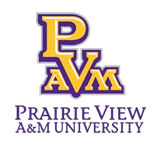Abstract
Background. Women are the greatest consumers of health information. Despite this fact, little is known about middle-aged and older women’s preferred sources for health information.
Objectives. This study aims to: (1) identify preferred sources of health-related information among middle-aged and older women; and (2) examine sociodemographics, family/household characteristics, health status, and health-related behaviors associated with their preferred sources for health information.
Methods. Data were collected from 3,946 middle-age and older women using a randomized multimodal survey of households in an eight-county region of Texas. Frequencies, Pearson’s chi-squares and one-way ANOVA were used to examine relationships to the respondent’s preferred sources of health information and assess differences among variables. Multinomial logistic regression was performed to compare factors associated with participants’ preferred source of receiving health-related messages.
Results. Most participants preferred receiving health information from healthcare providers (62.7%), followed by the internet (13.5%), mass media (12.2%), and family/friends (11.6%). Women who were older, Non-Hispanic/Latino African American, living in rural areas, who had more chronic conditions, who were overweight or obese, and had consulted a doctor in the past 12 months were significantly less likely to prefer internet-based health messages to receiving health information from healthcare providers. In contrast, participants residing with children ages 5 years and younger were more likely to prefer receiving health information from family and friends than from healthcare providers.
Conclusion: Although provider-patient communication was preferred, a variety of channels may be needed to disseminate accurate and reliable health messages to middle-aged and older women.
Acknowledgements
This study was supported by the Center for Community Health Development under Cooperative Agreement Number 1U48 DP001924 from the Centers for Disease Control and Prevention through the National Center for Chronic Disease Prevention and Health Promotion and the National Center for Injury Prevention and Control.
Recommended Citation
Bergeron, Caroline D.; Ory, Marcia; Goltz, Heather H.; Towne, Samuel D. Jr; Ahn, SangNam; Mier, Nelda; and Smith, Matthew Lee
(2017)
"Preferred health information sources: An examination of vulnerable middle-aged and older women,"
Journal of Family Strengths: Vol. 17:
Iss.
1, Article 8.
DOI: https://doi.org/10.58464/2168-670X.1342
Available at:
https://digitalcommons.library.tmc.edu/jfs/vol17/iss1/8





